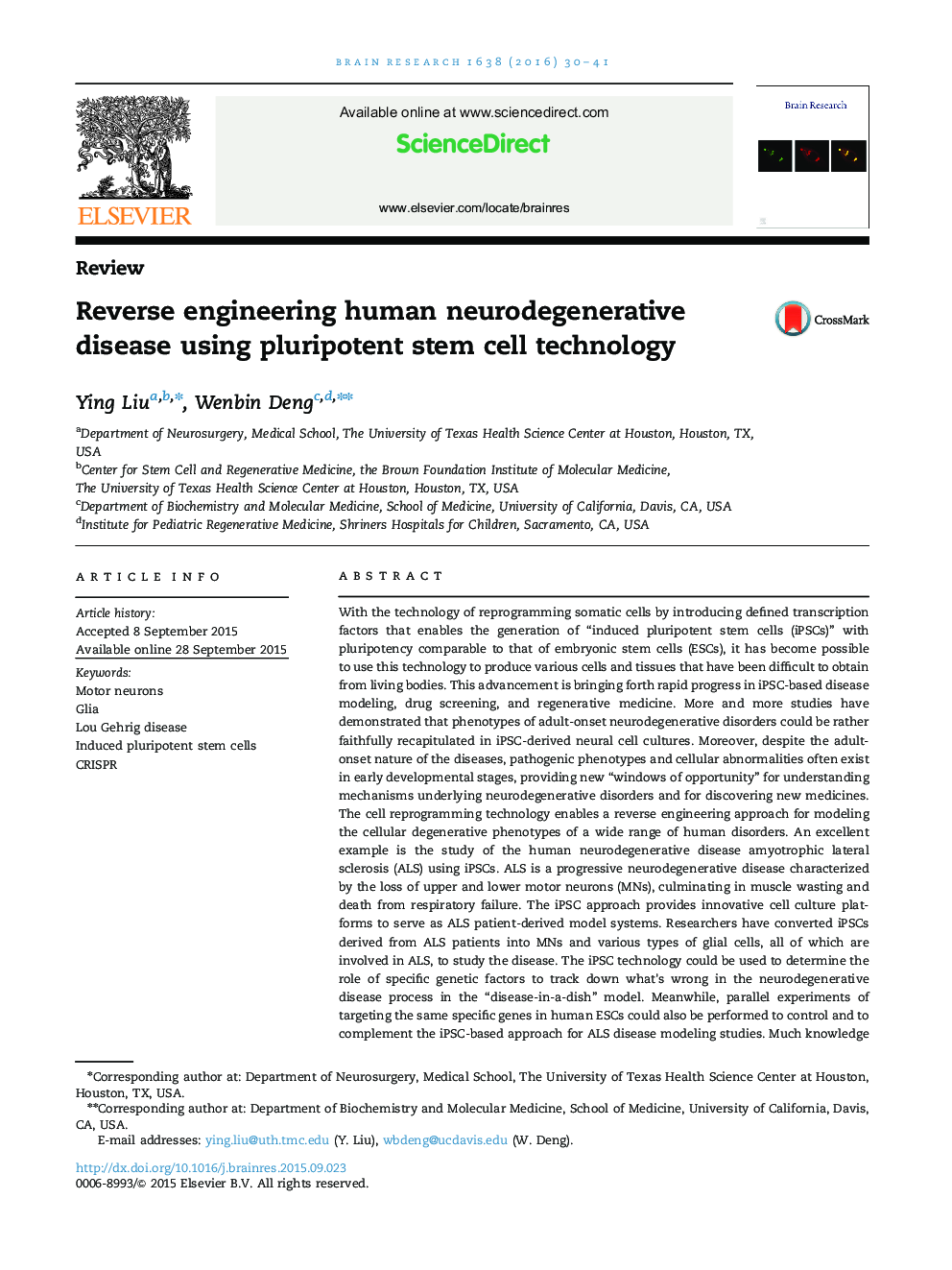| کد مقاله | کد نشریه | سال انتشار | مقاله انگلیسی | نسخه تمام متن |
|---|---|---|---|---|
| 4323659 | 1292364 | 2016 | 12 صفحه PDF | دانلود رایگان |
• ALS pathogenic development can be determined by a reverse engineering approach.
• Patient iPSCs can be used to investigate the key pathogenic processes of ALS.
• The iPSC-based network of pharmacology enables drug discovery for ALS.
• iPSCs provide promising cell source for cell therapy in ALS.
With the technology of reprogramming somatic cells by introducing defined transcription factors that enables the generation of “induced pluripotent stem cells (iPSCs)” with pluripotency comparable to that of embryonic stem cells (ESCs), it has become possible to use this technology to produce various cells and tissues that have been difficult to obtain from living bodies. This advancement is bringing forth rapid progress in iPSC-based disease modeling, drug screening, and regenerative medicine. More and more studies have demonstrated that phenotypes of adult-onset neurodegenerative disorders could be rather faithfully recapitulated in iPSC-derived neural cell cultures. Moreover, despite the adult-onset nature of the diseases, pathogenic phenotypes and cellular abnormalities often exist in early developmental stages, providing new “windows of opportunity” for understanding mechanisms underlying neurodegenerative disorders and for discovering new medicines. The cell reprogramming technology enables a reverse engineering approach for modeling the cellular degenerative phenotypes of a wide range of human disorders. An excellent example is the study of the human neurodegenerative disease amyotrophic lateral sclerosis (ALS) using iPSCs. ALS is a progressive neurodegenerative disease characterized by the loss of upper and lower motor neurons (MNs), culminating in muscle wasting and death from respiratory failure. The iPSC approach provides innovative cell culture platforms to serve as ALS patient-derived model systems. Researchers have converted iPSCs derived from ALS patients into MNs and various types of glial cells, all of which are involved in ALS, to study the disease. The iPSC technology could be used to determine the role of specific genetic factors to track down what׳s wrong in the neurodegenerative disease process in the “disease-in-a-dish” model. Meanwhile, parallel experiments of targeting the same specific genes in human ESCs could also be performed to control and to complement the iPSC-based approach for ALS disease modeling studies. Much knowledge has been generated from the study of both ALS iPSCs and ESCs. As these methods have advantages and disadvantages that should be balanced on experimental design in order for them to complement one another, combining the diverse methods would help build an expanded knowledge of ALS pathophysiology. The goals are to reverse engineer the human disease using ESCs and iPSCs, generate lineage reporter lines and in vitro disease models, target disease related genes, in order to better understand the molecular and cellular mechanisms of differentiation regulation along neural (neuronal versus glial) lineages, to unravel the pathogenesis of the neurodegenerative disease, and to provide appropriate cell sources for replacement therapy.This article is part of a Special Issue entitled SI: PSC and the brain.
Journal: Brain Research - Volume 1638, Part A, 1 May 2016, Pages 30–41
